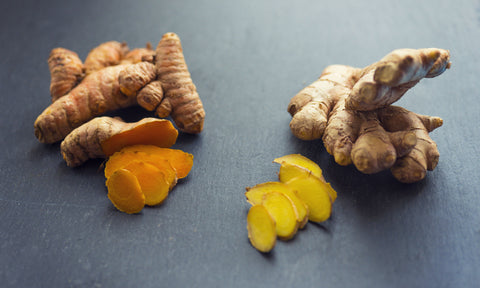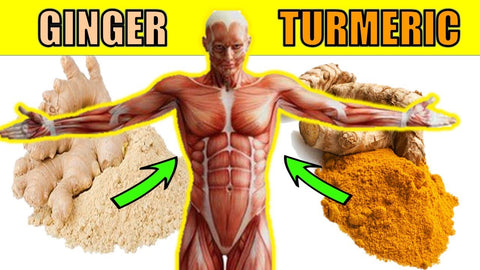
Ginger and turmeric are two popular spices that share similarities in name and appearance, yet they possess distinct characteristics and health benefits. While both have been valued for their culinary and medicinal properties for centuries, understanding their differences can help us appreciate their unique qualities.
Ginger vs. Turmeric:

Ginger: Ginger is a knobby, beige-colored root with a spicy flavor and pungent aroma. It has a firm texture and is often used fresh, dried, or powdered in cooking.
Turmeric: Turmeric, on the other hand, is a bright orange-yellow rhizome with a bitter taste and earthy aroma. It is typically used in powdered form and is prized for its vibrant color and medicinal properties.
Ginger: Ginger has a spicy, warm flavor with subtle citrus undertones. It adds depth and heat to dishes and beverages, making it a versatile ingredient in both sweet and savory recipes.
Turmeric: Turmeric has a slightly bitter, peppery taste with hints of mustard and ginger. Its distinct flavor is essential in curry powders and spice blends, imparting a golden hue to dishes.

Ginger: Ginger is widely used in Asian cuisines, particularly in dishes like stir-fries, curries, and soups. It is also popular in beverages such as ginger tea and ginger ale.
Turmeric: Turmeric is a key ingredient in curry powders, giving dishes like curry and dal their characteristic color and flavor. It is also used in beverages like golden milk and as a natural food coloring agent.

Ginger: Ginger is valued for its digestive benefits and anti-inflammatory properties. It can help alleviate nausea, indigestion, and muscle soreness.
Turmeric: Turmeric contains curcumin, a potent anti-inflammatory and antioxidant compound. It is used to support joint health, boost immunity, and reduce inflammation in the body.
In conclusion, while ginger and turmeric share some similarities, they are distinct spices with unique flavors, appearances, and health benefits. Incorporating both into your diet can provide a wide range of culinary and medicinal advantages. From adding ginger to stir-fries to sprinkling turmeric in curry, these spices can elevate the flavor and nutritional value of your meals.

Additionally, for those looking to maximize the health benefits of turmeric, supplementing with specialized turmeric supplements can be a convenient option. These supplements are often formulated to deliver concentrated doses of curcumin, offering targeted support for inflammation reduction, joint health, and immune function.